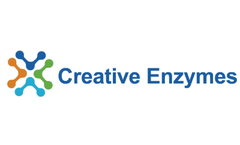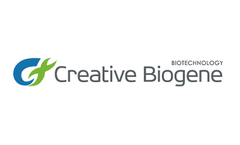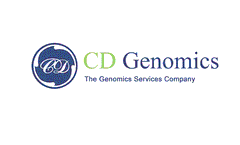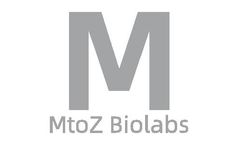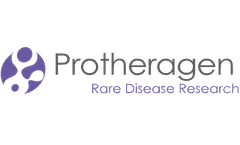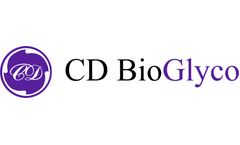Genome Analysis Articles & Analysis
23 articles found
Comparative genomic analyses reveal that commercially available L. acidophilus powders differ markedly in key functional elements: Bacteriocin production genomics: Strains such as L. acidophilus NCFM contain complete operons for lactacin B production, while others (e.g., La-14) exhibit truncated bacteriocin genes, resulting in differential antimicrobial ...
Fosmid libraries represent a pivotal advancement in the field of genomics and molecular biology, offering a robust method for genomic cloning and analysis. ...
Degradome sequencing, also known as parallel analysis of RNA ends (PARE) sequencing, is a cutting-edge technique that leverages high-throughput sequencing and bioinformatics to investigate the degradation products of mRNA. ...
Next-Generation Sequencing (NGS) has revolutionized genomics, providing unprecedented insights into the structure and function of genomes, transcriptomes, and epigenomes. ...
Using early data from differential proteomics/transcriptomics/genomics analysis, this method has validated biomarkers in large biological sample sizes. ...
Applications and Advantages of Variant Analysis The following areas can benefit from variant detection analysis on whole-genome resequencing or reduced representation genome sequencing: (1) molecular markers, (2) pathogenic gene, (3) molecular breeding, (4) mining trait genes, (5) evolution, and (6) genetic polymorphism database. ...
With the development of genomic technology, researchers have found that a single reference genome can no longer meet the needs of genomic data analysis, and more and more species, including the human genome, are choosing to construct a pan-genome instead of a single reference ...
(2) Evaluation of viral vector purity: detect and quantify impurities derived from the host cell system where the vector product is produced or from downstream purification processes using sensitive and ready-to-use methods. (3) Capsid analysis of viral vectors: capsid analysis of viral vectors, including purity analysis, full/empty capsid ...
By predicting and annotating all genes in the genome, they aim to identify genes associated with various phenotypes, including drug resistance, heavy metal resistance, and environmental adaptability. ...
Finally, CD Genomics provides detailed analysis reports that help researchers gain an in-depth understanding of T-cell clone diversity and clonality in the samples. ...
Small RNA sequencing, an example of targeted sequencing, is a powerful method for small RNA species profiling and functional genomic analysis. Here, we present the guidelines for bioinformatics analysis of small RNA sequencing. ...
WGS can be used for variant calling, genome annotation, phylogenetic analysis, reference genome construction, and more. ...
They are generally divided into fungi, actinomycetes, bacteria, spirulina, rickettsia, chlamydia, mycoplasma and viruses. Microbial whole genome sequencing is an important tool for mapping genomes of novel organisms, finishing genomes of known organisms, or comparing genomes across multiple samples. Sequencing the entire ...
Bioinformatics in Traceability of MicroorganismsThe phylogenetic relationship of microorganisms is relatively complex, so it is challenging to conduct the tracing analysis. By bioinformatics analysis, scientists can readily build evolutionary trees and describe the evolutionary relationships among species and molecules, fulfilling various needs in pharmaceutics, ...
We are excited to announce a beta release of our Calypso tool on the latest Phase II Undiagnosed Diseases Network (UDN) data. This is a project performed in collaboration with the UDN, and we encourage our initial set of UDN investigators to trial this release and provide any feedback, comments, questions or requests to info@frameshit.io. ...
With the advancement of technology, bioinformatics analysis not only handles, analyzes, compares and visualizes DNA/RNA sequences but also helps to decode complex genomes completely. ...
It is also known as the major histocompatibility complex (MHC), and it is the most polymorphic region in the human genome, involving diverse immune reactions. HLA is divided into HLA-class I (corresponding to MHC class I) and HLA-class II (corresponding to MHC class II) according to the different types of T cells they interact with. ...
” Dr Prieto Barja explains. “[Genome data] created a lot of confusion on how to use the right tools for analysis. ...
ByLifebit
Introduction to Bioinformatics for Microbial Metagenomics In microbial ecology, metagenomic techniques are now widely utilized to research microbial communities in greater depth, including many strains that cannot be produced in the lab. Microbial bioinformatics may now be used to mine large metagenomic datasets for broad patterns that govern microbial communities. Typical metagenomic and ...
In the study, the researchers measured lipopolysaccharide levels in the blood of more than 11,000 Finnish people, followed by genome-wide association analysis of participants to map the association between their body lipopolysaccharide levels and the genome, and after further analysis the researchers used the FinnGen cohort, ...

